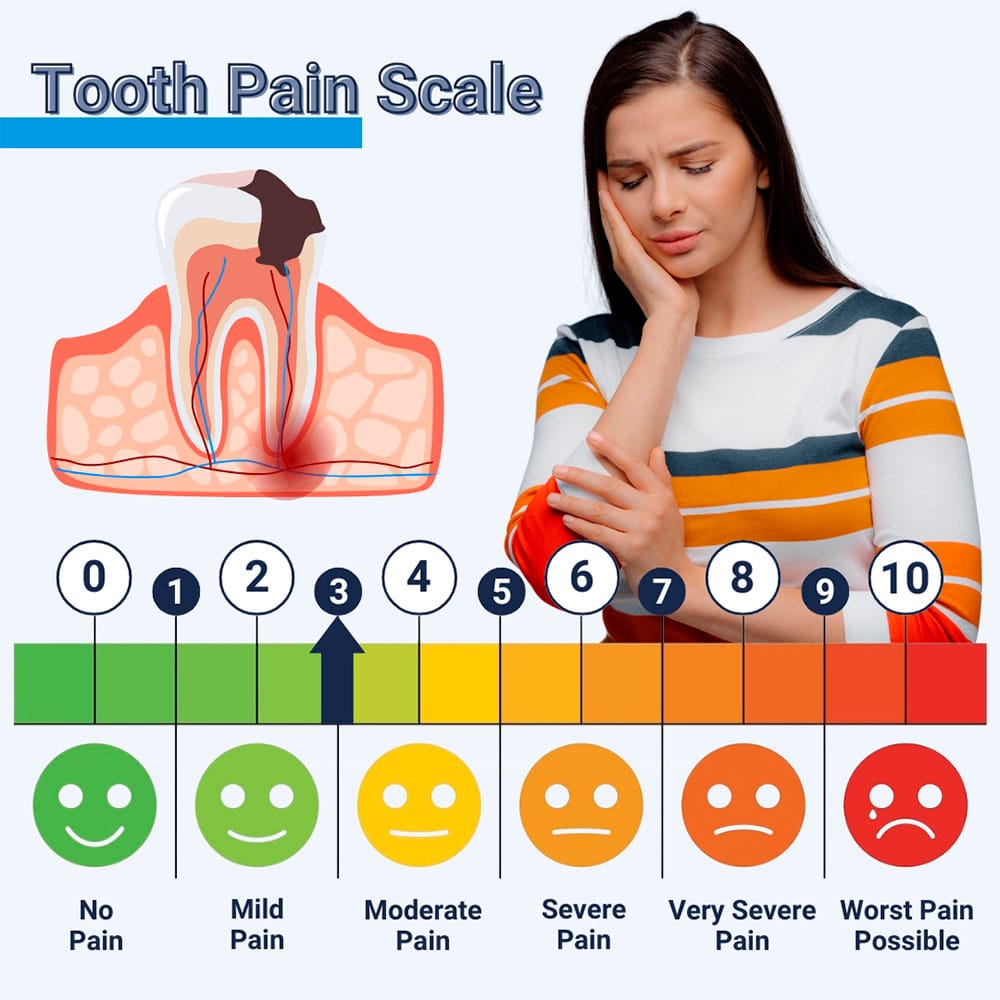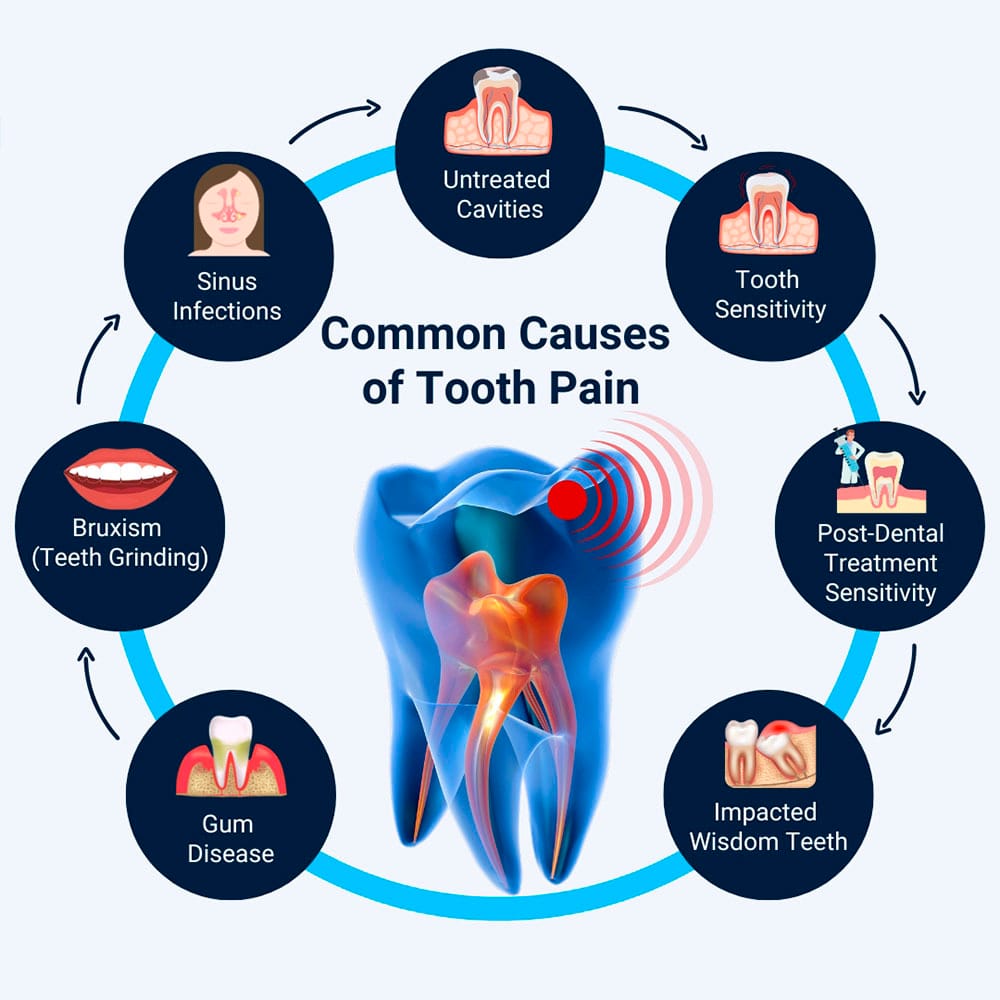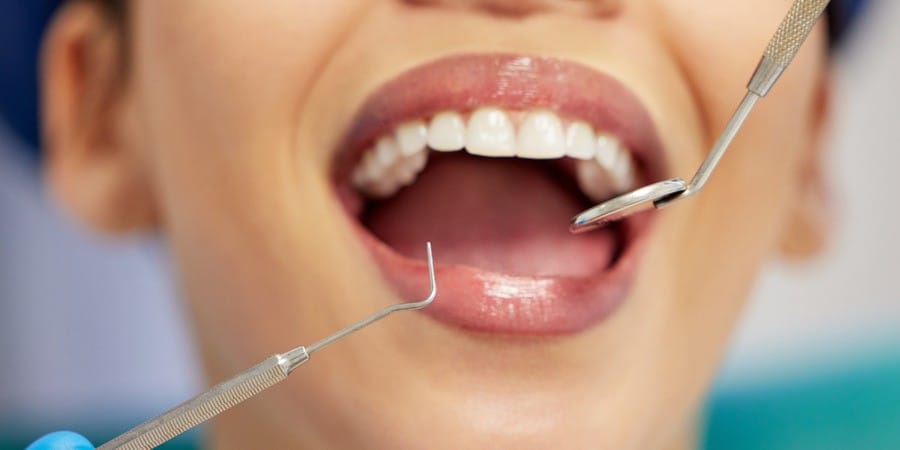What Is Tooth Pain?
Tooth pain can occur in the tooth or the gum surrounding it. Sometimes, the pain is minor and temporary, possibly due to something stuck around your gum. In other cases, the tooth pain is more severe and requires professional dental treatment. For patients with anxiety or sensitivity, sedation or sleep dentistry can ensure a comfortable and stress-free experience during treatment.

Common Causes of Tooth Pain
There are many reasons why a tooth can start to feel painful or uncomfortable, which include:
- An untreated cavity. A hole in a tooth can affect the tooth nerve, causing pain and discomfort.
- Tooth sensitivity. Some teeth can feel sensitive to temperature changes or when eating certain foods.
- Tooth sensitivity after dental care. After a dental filling or other dental treatment, it can take a week or two for teeth to settle down. Any tooth sensitivity should be temporary.
- Impacted wisdom teeth. An impacted or partially erupted wisdom tooth can cause pain and infection.
- Gum disease. Advanced gum disease can cause tender, bleeding gums.
- Teeth grinding and clenching (bruxism). Bruxism can damage teeth and cause gum recession.
- Sinus infection. A sinus infection can cause pain in your upper back teeth near the sinus cavities.

Different Types of Tooth Pain
The pain you experience can differ.
- Some people experience tooth pain as a continual throb or consistent ache.
- It can be sharp and shooting. You may only experience pain when biting or chewing on the problem tooth.
- Tooth sensitivity can result from eating or drinking anything hot, cold, sweet, or sour.
- Tooth pain caused by bruxism can radiate outward into your facial muscles, affecting your jaw joints or even causing earache.
When to Seek Professional Dental Care for Tooth Pain
If you have a painful tooth, please don’t suffer in silence. You should always come to see us if the pain lasts more than one or two days. Other symptoms can include:
- Swelling around the tooth or a swollen jaw
- Fever
- Bad breath
- An unpleasant taste, even after brushing your teeth
- Difficulty chewing or opening your mouth
- Visible damage to a tooth or the gum surrounding it
Diagnosing Tooth Pain
When you visit Clock Tower Dental, we can gently examine your tooth. We will ask about your symptoms and the type of pain you experience. Digital dental X-rays enable us to examine any damage and infection to a tooth more closely.
Once we have identified the reason for your tooth pain, we can discuss appropriate treatment.
Treatment Options for Tooth Pain
The treatment suggested will depend on the reason for your tooth pain and is tailored to meet your needs. Typical treatments for tooth pain can include:
- Filling any cavities.
- Root canal therapy.
- Periodontal treatment for gum disease.
- Tooth extraction for impacted wisdom teeth.
- Desensitizing treatments for sensitive teeth.
- A custom night splint for bruxism.
If we think the problem is due to a sinus infection, then we recommend that you see your healthcare provider. They can provide appropriate treatment and, if required, antibiotics to clear up the infection.
Home Remedies for Toothache
You can use home remedies for tooth pain until you can see a dentist, but remember that you will almost certainly need professional dental care to eliminate the pain.
Home remedies can include:
- A warm salt water rinse is made by dissolving a little salt in a cup of warm water. Swish the water around your mouth for 30 seconds, then spit it out.
- A hydrogen peroxide rinse is made by diluting it with equal parts of water. Swish it around your mouth, and spit it out as you mustn’t swallow it. You should never use neat hydrogen peroxide as a mouth rinse.
- An ice pack applied to the outside of your mouth can help reduce pain and inflammation by shrinking the blood vessels. Wrap the ice pack in a clean towel and hold it to the outside of your mouth for up to 20 minutes.
Please Don’t Ignore Tooth Pain
If you have a painful tooth and the problem doesn’t disappear within a day or two, please get in touch with us. Persistent tooth pain is a sign that something is wrong.
The sooner we can treat it, the more quickly we can eliminate pain and discomfort.

